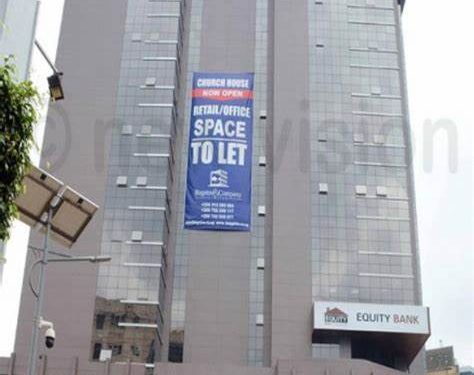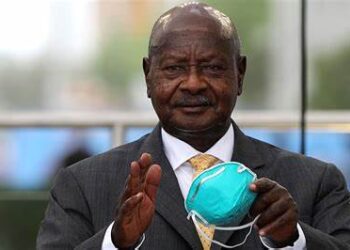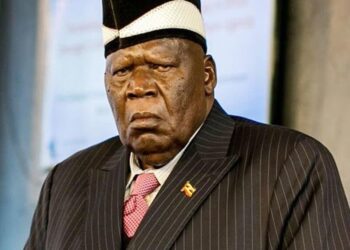Today marks a monumental occasion for the Church of Uganda (CoU) and its congregants. As thousands of pilgrims gather at the Anglican site in Namugongo to commemorate Martyrs’ Day, they will be greeted with exhilarating news—the full repayment of the debt for Church House. This 16-storey commercial building on Plot 34, Kampala Road, had been a financial albatross around the church’s neck for nearly 14 years. However, under the astute leadership of Archbishop Samuel Kaziimba, the debt has been completely cleared. This achievement is not merely a financial victory but a testament to the power of unity, faith, and collective effort.
The story of Church House is one of ambition met with adversity. Nearly 14 years ago, under then Archbishop Henry Luke Orombi, the CoU borrowed $17 million (approximately Shs40 billion) from Equity Bank to construct the building. This loan was critical to achieving the Church’s vision of a self-sustainable future. With the Church contributing 30 percent and Equity Bank 70 percent towards the construction, the project was a significant financial undertaking. The building, completed in 2018, was poised to be a commercial hub and a source of revenue for the Church. However, the reality of repaying such a substantial loan soon set in. By 2021, it became apparent that the Church was struggling to meet its financial obligations. The threat of losing Church House to Equity Bank loomed large, casting a shadow over the Church’s celebrations and initiatives. It was a time of great uncertainty and concern for the CoU and its followers.
The transformative moment came with Archbishop Kaziimba’s strategic leadership and unwavering commitment to securing the Church’s future. Recognizing the dire need to resolve the debt issue, Kaziimba launched an ambitious fundraising drive. This drive was not just a call to the Church’s 37 dioceses but a rallying cry to all Anglicans, well-wishers, government entities, and private companies across Uganda. The response was nothing short of miraculous. Adams Sadiiki, the provincial spokesperson for the Church of Uganda, highlighted the incredible unity and generosity that the campaign inspired. Contributions poured in from all corners, embodying the spirit of community and shared purpose. This collective effort, described by Sadiiki as a tremendous job, ultimately raised the remaining Shs16 billion needed to clear the debt. This success story underscores the power of faith and collective action in overcoming seemingly insurmountable challenges.
Today’s announcement during the Martyrs’ Day celebrations is more than just a statement of financial freedom. It is a symbol of resilience, unity, and the unwavering faith of the Anglican community. For years, Martyrs’ Day has been marked by reflections on sacrifice and perseverance. This year, however, it will also be a celebration of a significant achievement—becoming debt-free and securing the future of Church House. Sadiiki emphasized that this news brings a new wave of excitement and hope among the pilgrims. For years, the narrative of Church House was dominated by the looming debt crisis. Now, that chapter is closed. The pilgrims and the wider Anglican community can look forward to a future where the Church is not only self-sustaining but also able to generate dividends for its parishes and projects.
Church House stands as a beacon of the Church’s vision for self-sustainability. Its completion and now debt-free status mean that it can finally start fulfilling its purpose as a commercial enterprise. The revenues generated from Church House will support various church activities, development projects, and further investments, ensuring that the Church of Uganda can sustain itself independently. This achievement is a milestone in the Church’s long-term strategy. By prioritizing the completion and financial security of Church House, the CoU has laid a strong foundation for future initiatives. This strategic move aligns with Archbishop Kaziimba’s broader vision of a self-reliant Church, capable of supporting its mission and expanding its impact without the constant pressure of financial instability.
The success of the fundraising drive for Church House is a powerful reminder of what can be achieved when communities come together with a common goal. The collaboration between individual Christians, dioceses, government bodies, and private entities showcases a remarkable unity of purpose. It is a testament to the shared values and commitment to the Church’s mission. This collective effort has not only saved a building but has also reinforced the bonds within the Anglican community. It has shown that when faced with challenges, the community can rise above and achieve greatness together. This unity will undoubtedly serve as a strong foundation for future endeavors and challenges.
As the pilgrims at Namugongo celebrate this Martyrs’ Day, they do so with renewed hope and optimism. The debt-free status of Church House is a new chapter in the history of the Church of Uganda. It signifies financial stability and opens up new possibilities for growth and development. Ms. Barbara Among, spokesperson of Equity Bank, hinted that further details about the project will be unveiled during the celebrations. This announcement will likely include future plans and initiatives that will build on the success of clearing the debt. It is an exciting time for the CoU and its followers, as they anticipate the dividends and opportunities that Church House will bring.
In conclusion, the full payment of the debt for Church House is a historic achievement for the Church of Uganda. It reflects the power of faith, unity, and collective effort. As the pilgrims gather to commemorate Martyrs’ Day, they do so with a sense of pride and accomplishment, knowing that their Church is now debt-free and poised for a prosperous future. This achievement is not just a financial milestone but a beacon of hope and resilience for the entire Anglican community.







Discussion about this post